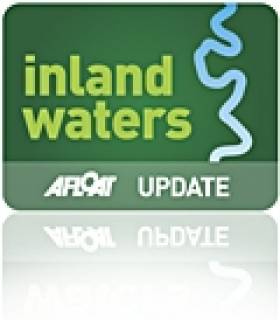Displaying items by tag: powerboat racing
Irish Powerboat Racing Team Third at Cowes Torquay Cowes 2017 UIM Marathon
Irish powerboat racing team Allblack Racing were third overall at the Cowes Torquay Cowes 2017 UIM Marathon Powerboat. The Arklow–based team headed by John Ryan also won the best–placed non UK–crew and the best placed diesel Powered Powerboat.
It was also an honour for them as the first Irish team to have a place on the podium of this world famous Powerboat race which is in its 57th year.
Youghal Stages Powerboat Championships
Youghal Harbour comes alive this Sunday when the only round of the ISA National Powerboat Championships to be held in Cork this year rolls into town and down the slipway. This will be the penultimate round of this year's series and with points tight at the top of each class, competitive racing is guaranteed. The organisers of this round - Youghal Bay Boat Club - have been working hard to design courses that will ensure tight exciting racing with the whole event happening right in front of Youghal quays. Padraig Brooks - Commodore of Youghal Bay Boat Club tells us "This is the first time our new club has held powerboat racing here in Youghal. We hosted a round of the Championships across in Ardmore back in July which proved to be an enormous success with huge crowds and fantastic racing and now we look forward to welcoming the racing fleets and spectators to the waters of Youghal for what's expected to be a memorable round of the championship. The layout of the quays allows for great viewing and we hope people will come down and enjoy the racing".
Four classes are expected to race this Sunday - 29th August: The F2 & F4 classes look light waterborne jet fighters and can attain speeds approaching 200 kilometres an hour, the T850 fleet are an exciting monohull class, while the P750 class (better known as Thundercats) will make a welcome return to these waters following a highly successful international race back in 2008. Expect lots of noise, tons of excitement and a great spectacle for a wonderful family afternoon.
This is another exciting event for the recently formed Youghal Bay Boat Club. At the start of the Summer large crowds turned out to enjoy their Open Day which was followed closely by 'WindQuest' - an inter-club sailing competition - and then a competitive sea-angling competition in July. Given the natural amenities in the area it's perhaps little surprise that a club in this East Cork town should have proved so active.
Racing on Sunday begins at 12.30 and continues throughout the afternoon with several races in each class. Music and commentary on the day will be provided by Community Radio Youghal and the centre of the action will be Nealon's Quay (next to 'The Quays' bar).
Powerboat Racing Garadice Lake – Haughton's Shore
Powerboat Racing will take place at Haughton's Shore, Garadice Lake on the Shannon Erne inland Waterway from Sun 18th July 2010 from 09.00 hrs to 18.00 hrs.
Through traffic will be catered for between races. Waterways Ireland has requested Masters of vessels are requested to proceed at slow speed and with minimum wash when passing this stretch of the navigation and to heed any advice or instructions issued by the race officials.































































